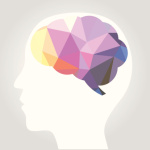
It was also found that bilingualism has cognitive benefits beyond just language processing, specifically in regards to executive functioning, which corresponds to things like memory, reasoning, task flexibility, problem solving, and planning. These numerous benefits are accompanied by, and possibly related to, clearly seen structural changes in the brain, such as fiber density, axonal diameter, and myelination (the creation of fatty tissues around the neuron), which all are critical to the proper functioning of the nervous system. These dynamic effects on white matter structure result in a sort of cognitive reserve, helping to preserve white matter integrity in older age.
Although there is currently no direct causal link between enhanced cognitive functioning and active bilingualism, there is consistent positive correlation. These findings did not vary across age or length of time learning a second language, but by the level of dual language immersion experienced. Overall, the study concludes that actively using two or more languages every day can change brain structure for the better and produce lasting effects in cognitive function later in life.
The full study can be read at http://www.pnas.org/content/112/5/1334.full


